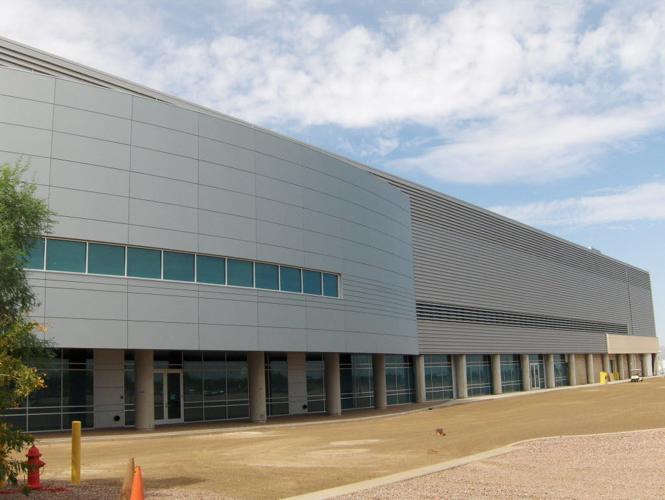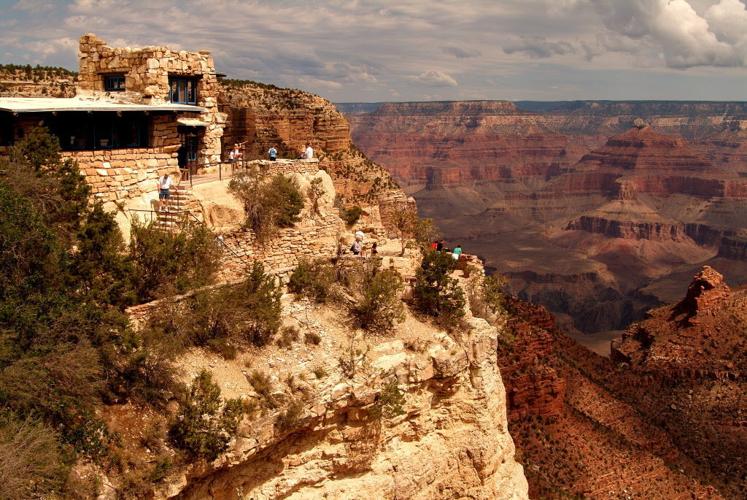PHOENIX — With their traditional tools of efficiency, innovation and new technology, businesses can lead the way on water conservation, advocates say.
Several big employers say they have done just that:
Twenty years ago, Intel Corp., the world’s largest semiconductor manufacturer, treated 2 gallons of regular potable water to make a gallon of ultrapure water it needs to clean its chips. Now it uses 1.1 gallon of potable water to produce a gallon of pure water, the company says.
Miller Coors, the world’s largest beer manufacturer, says it has cut its water use from 4.1 gallons for every gallon of beer it brewed five years ago to 3.29 gallons today. It hopes to have the ratio down to 3-to-1 by 2020.
Xanterra Parks and Resorts Inc., the U.S.’ largest park concessions management company, says it’s cut water use 15 percent since 2002 despite significant growth in its holdings, including lodges and other concessions at the Grand Canyon and seven other national parks.
Executives of the companies shared their conservation success stories at a Phoenix conference last week. The event was sponsored by a business-oriented conservation group seeking to keep the drought-pinched, over-allocated Colorado River — which provides drinking water to seven states — from running dry.
Protect the Flows had these and other business officials at the two-day session because its mission is to work with the business community on water, said Craig Mackey, the Denver group’s co-director.
“Our view is that the business community can lead on best practices,” Mackey said in an interview. “American innovation is driven by the business community. It can certainly lead on water efficiency and conservation and can lead also on education and communication and messaging on water.”
In an era of uncertainty sparked by a record drought and continued overuse of river water, the business community can also be a key player in public policy decisions regarding water, Mackey said.
“For 100 years in the water world, water has been managed by a small, dedicated group of water managers and water utilities,” Mackey said. “In an era of water uncertainty, we need everybody at the table.”
Miller Coors
Miller Coors has developed a dry lubrication technology to rinse its bottles before they get beer, said Marco Ugarte, the company’s sustainability manager. The company has 400 to 500 employees assigned to look for improvements in all operations “on the front line,” including water use, he said.
It’s recycling water for its cooling towers and for irrigating the grounds outside its breweries. In drought-stricken California, the company is changing its outdoor landscaping to grow native plants similar to what’s commonly grown in Arizona, he said.
While technology has made a difference, behavioral change makes the biggest difference, he said.
“The beauty of sustainability is that regardless of the company’s size, you can always do something,” he said.
Intel
Intel has achieved much of its water savings through pretreatment of water and through advances in water treatment technologies, said Jeanne Forbis, an Intel spokeswoman.
Also, recycled water, in this case “gray” water from various plumbing facilities, is used at Intel’s Chandler plant, its second largest besides its plant in the suburban Portland, Oregon area. The Chandler plant by itself has reduced its total water use by 15 percent over 20 years, Forbis said.
It currently uses 7 million gallons a day of gray water, but has infrastructure to use gray water only at a few locations, said Todd Brady, Intel’s global sustainability director.
At its Chandler plant, Intel has also built a reverse osmosis water treatment facility. At the plant, which the company paid to build but the city of Chandler owns and operates, treated water is reused by Intel or stored in an underground aquifer for future use.
Overall, gray water has enormous potential, particularly for industry, Brady said.
“Many industrial companies have cooling towers and mechanical equipment where typically gray water can be used,” he said in an interview. “It doesn’t need to be drinking water quality, but the critical part is, as the industrial zones are formed, that infrastructure is laid out so gray water is available to industry.
“The city has to play a role in getting gray water to businesses. Otherwise, it becomes prohibitively expensive to get water from a treatment center to an industrial plant,” Brady said.
And despite the water savings, Intel’s plants worldwide still use 9 billion gallons a year, he said.
By comparison, Tucson Water customers used 29.3 million gallons in 2015.
It takes 16 gallons to make a computer chip. It takes 1.4 gallons to grow an orange, 37 gallons to make a cup of coffee including the water needed to grow coffee beans, 660 gallons to make a quarter-pound hamburger and 15.25 gallons for a typical shower, Intel’s figures show.
Xanterra
Since 2002, Xanterra has used about 10 billion gallons at its facilities, give or take a couple of million, said Catherine Greener, the company’s vice president for sustainability.
But it’s saved enough water since then to provide about a gallon apiece to “every man, woman and child in the U.S.,” Greener told the conference. The company operates lodges and other concessions at eight national parks, including the Grand Canyon’s South Rim, and at Rocky Mountain and Zion national parks, at seven state parks and a handful of private facilities.
“How did we do it? We had big projects and lots of little projects,” Greener said. “We kept after it.”
It has a pond that collects rainwater to use on its Grand Canyon Railway steam train, she said. It also has a dual flush toilet system — one that switches back and forth depending on the flush’s purpose — at the railway and plans to install one at its main Grand Canyon park concessions in the next few years, she said.
“When we do room renovations, we typically try to put in low-flow shower heads,” she said, adding that the company routinely upgrades its equipment to save energy and water.
“We have training for our employees as to how they can use less water on the job,” Greener said.





